Photo of the Day: 20190112_MDRS202_OurMarkOnTheMartianFlag
Journalist Report – Jan 12th
MDRS Crew 202, Journalist Report
Sol 14 – 01/12/2018
Name the space movie (or show) given the following quote. Answer at the end of the Report:
Mankind was born on Earth … it was never meant to die here.
—
This mission began with six individuals who vaguely knew each other, tied together by a common alma mater. Each crew member from a different walk of life, a wide variety of backgrounds, and unique research goals. After two weeks of being locked in a corn silo with little to no interaction with the outside world, I can honestly say I love these people so Dodge Ram much!
Paraphrased from our Director, Martian time moves different than Earth time, and this statement could not be more true. Our time here feels much longer than the mere 14 days, and our outside lives still seem lightyears away. Today, it became a little more real that we would be returning home tomorrow as we drove into town, on a paved road, ordered food in a restaurant, and sat down for a meal someone outside of the crew had prepared for us. Our eyes bigger than our stomachs, we gorged on burgers, shakes, and fries and laughed the night away. Giggling at inside jokes you had to be there for. Enjoying each other’s company.
Reflecting on my time at MDRS, I could not have predicted all the wonderful things I would take away from this experience. As Crew Journalist, I could not be more fortunate to have the role of listening to everyone’s incredible story and translating it into written words, videos, or sketches.
I always believed there was a place in space for all backgrounds – the vast and creative arts, all types of engineering, the full spectrum of sciences – but hearing our Chemistry major describe discovering her place in space, how she is finding ,through this trip, that there are roles for people outside of just aerospace majors and how she is just as valuable as anyone else in the crew was incredibly inspiring and is a message I will carry with me through my own career in the space industry.
You have a microbiome and plants have a microbiome and environments have microbiomes and all these microbiomes interact and affect each other. Sometimes those effects are nice, and sometimes they carry pathogens. This is incredibly important to know for Mars!
Space exploration is more than just the amazing data we collect about the planet, it will also push our minds and bodies to new extremes. This stress could have a long-term impact on decision making, which could be the difference between life and death in deep space exploration. I was always told stress is bad for you, but now I know a little more about the science behind why it is bad for you!
Look up at the Night Sky. What do you see? With the naked eye, we see a portrait of stories from long ago, a shimmering display of lights in different depths, a beautiful Milky Way splitting the sky in two. It is at the MDRS observatory where we captured close up images of these blinking lights and discovered these stars were not stars at all, but gigantic galaxies, colorful nebulas, and complex celestial bodies. Billions and trillions of celestial wonders that will appear simply as stars to astronaut eyes from both Earth and Mars.
ROCKS. Wow. Have you taken time today to appreciate the rocks surrounding you? The boulders you step on every day and their magnificence and importance to science? While my head will always be in the stars, after this mission I will take more time to appreciate the amazing and unassuming wonders at my feet.
Most of all, the people. This last paragraph is just for Crew 202. Brett. Yust Yoking. 82 years to 3000. 5 minute planks. Atila this is Hab. You’re Welcome! Nutella. Engineering. TP, peeps, and naps. The most rewarding part of this adventure was getting to know you wonderful people. As our Crew Engineer said, “Well I guess we all just have to live in the same place now”. I will miss each and every one of you as we begin to part ways, and I will forever be laughing at things no one else will understand. You have all given me an incredible appreciation for your backgrounds, your science, and simply you as a human being. Don’t be strangers. Keep in touch. My door is always open. I wish you all the best when you return to your adventures on Earth! Yeehaw!
—
Movie (or Show) Answer: Interstellar
Astronomy Report – Jan 12th
Astronomy Report
Crew 202 Astronomy Report 12-Jan-2019
Crew Astronomer: Cesare Guariniello
MDRS ROBOTIC OBSERVATORY
Robotic Telescope: MDRS-WF
Objects Viewed: M63, M78, M101, M106
Problems Encountered: none
Green Hab Report – Jan 12th
Crew 202 Greenhab Report 12-Jan-2019
Greenhab Officer:
Jake Qiu & Hermes Bolivar
Environmental Control:
Heating
Cooling w/ ambient air (1hrs)
40% Shade Cloth on
80% Shade Cloth on
Average Temperatures:
Low: 24.6°C
High: 39.5°C
Hours of Supplemental Light:
5
Daily Water Usage of Crops:
12 gallons
Water in Blue Tank (gallons):
51%, 151.5 gallons
Times of Watering for Crops:
1044
2031
Changes to crops:
* Threw away 2 pots of spinach due to it dying
* Radishes growing very well and one look almost ready for harvest
* Tomatoes looking lackluster
* Cucumbers still look bad, may need to move these pots to different locations
* Other crops display same progress
Narrative:
Watered plants throughout the day as needed. Showing Hermes from crew 203 the greenhouse for handover.
Experiment Results:
Date: SOL14 Crew 202 (SOL14 overall)
Watered Crew 201 experiments
Harvest:
Support/Supplies Needed:
Best Regards,
Jake
Sol Summary Report – Jan 12th
Crew 202 Sol Summary Report 12-Jan-2019
Sol: 14
Summary Title: Back on Earth
Author’s name: Cesare Guariniello and Oscar Ojeda
Mission Status: Nominal, the crew is back on Earth and met crew 203!
Sol Activity Summary: After breakfast, the crew began cleaning the habitat and the other facilities and got ready to meet crew 203. We had a short excursion with the Program Director and after dinner crew 203 is shadowing crew 202 for report training.
After a long trip, crew 203 was finally reunited in Grand Junction, had an amazing trip all the way to the station, and were warmly welcomed by crew 202. We joined the excursion and had our last dinner on Earth as we prepare for our mission
Look Ahead Plan: Tomorrow crew 202 will leave campus and crew 203 will receive field training
Anomalies in work: None
Weather: Sunny and warmer
Crew Physical Status: In great health
EVA: none
Reports to be filed: Sol Summary, Operations Report, Greenhab Report, Astronomy Report, Journalist Report
Support Requested: None
Operations Report – Jan 12th
Crew 202 Operations Report 12-JAN-2019
SOL: 14
Name of person filing report: Kasey Hilton
Non-nominal systems: Suit #9
Notes on non-nominal systems: One of suit #9’s electrical connections was loose yesterday and had to be soldered, but after soldering the suit would not turn on
Generator (hours run): 17hr 15min; Turned on last night (11Jan2019) at 17:15; Turned off this morning (12Jan2019) at 10:30; Turned on tonight (12Jan2019) at 17:29
Solar SOC – Turned on (11Jan2019) 81%; Turned off (12Jan2019) 100%; Turned on (12Jan2019) 83%
Diesel Reading – 60%
Propane Reading – 31%
Ethanol Free Gasoline – Not in use
Water (auxiliary tank) – Not in use
Water (static tank) – 65%; 345 gallons
Auxiliary to Static tank transfer – No
Gallons transferred: Not applicable
Water in GreenHab – About 50%; 155 gallons
Water (loft) – At level marker 12
Static to Loft Pump used – Yes; At 20:19 to refill tank
Water Meter: 01400068
Toilet tank emptied: Yes, still very very stinky ://
Deimos rover used: No, still not functional
Hours: Not applicable
Beginning charge: Not applicable
Ending charge: Not applicable
Currently charging: Not applicable
Sojourner rover used: ASSIGNED TO DIRECTOR
Hours: Not applicable
Beginning charge: Not applicable
Ending charge: Not applicable
Currently charging: Not applicable
Spirit rover used: No
Hours: 67.2
Beginning charge: 100%
Ending charge: 100%
Currently charging: Yes
Opportunity rover used: No, brakes are still not working correctly
Hours: 45.6
Beginning charge: 100%
Ending charge: 100%
Currently charging: Yes
Curiosity rover used: No
Hours: 69.0
Beginning charge: 100%
Ending charge: 100%
Currently charging: Yes
Notes on rovers: Brake fluid in Opportunity was replaced but the brakes are still not functioning properly
ATV’s Used: None (Honda, 300, 350.1, 350.2, 350.3)
Reason for use: None
Oil Added? No
ATV Fuel Used: None
# Hours the ATVs were Used today: None
Notes on ATVs: Nothing to report
HabCar used and why, where? Used to get water and dinner in town
CrewCar used and why, where? Used to pick up crew 203 in Grand Junction and get dinner in town
General notes and comments: Nothing to report
Summary of internet: Nothing to report
Summary of suits and radios: Suit #9’s electrical connection in the recharger was soldered last night but did not turn on again after, even though the battery has sufficient charge; Suit #7 has not been fixed yet; The new crew engineer has been made aware of the situation
Summary of Hab operations: Nothing to report
Summary of GreenHab operations: Nothing to report
Summary of ScienceDome operations: Nothing to report
Summary of RAMM operations: Nothing to report
Summary of any observatory issues: Nothing to report
Summary of health and safety issues: Nothing to report
Questions, concerns and requests to Mission Support: Nothing to report
One last YEEHAW,
Kasey
Journalist Report – January 11th
MDRS Crew 202, Journalist Report
Sol 12 – 01/10/2018
Name the space movie (or show) given the following quote. Answer at the end of the Report:
At some point, everything’s gonna go south on you and you’re going to say, this is it. This is how I end. Now you can either accept that, or you can get to work. That’s all it is. You just begin. You do the math. You solve one problem and you solve the next one, and then the next. And If you solve enough problems, you get to come home.
Holy smokes. It’s Sol 13. SOL THIRTEEN. Can you even believe it? It is our last day of simulation. Our last day of donning the suits for an extra-vehicular activity (EVA). Our last day of asking ourselves: “Is this what would happen on Mars?”
Today’s agenda: EVA #12 crewed by the Executive Officer, Engineer, Geologist, and Journalist, wrap up the final touches on research projects, and prepare the habitat for the next crew. Our last EVA as a crew was one for the books. Behind the habitat, there are these humongous rolling hills. Our Geologist needed a few final samples from the top of the hills, a mere 500 foot climb. With no feasible way to use the rovers, we set off on foot, finding grips through dried waterways where the snow had melted earlier that week. The 20 pounds of life support were definitely felt during the climb, but once you got to the top of the hill… It was breathtaking. Large plateaus appeared as castles overlooking their expansive plains which melted into rolling hills striped beige, reds, and browns. The hills are a maze leading into the scenic point mountain, the entirety of its peaks in view and the partially cloudy sky forced rays of light to illuminate its white peaks. Our habitat, our home, visible, nestled within the hills. A speck of life on the colorful terrain. No photo can do it justice. It was an incredible end to our Martian adventure.
It is our last day as just Crew 202 in the habitat. Upon our return from the EVA, work kicked into high gear. We conserved enough showers for each crew member to cleanse one last time before departing. This was a merciful act for the poor people on the plane home who have the unfortunate pleasure of sitting next to our mud-caked boots and dry shampoo spiked hair. We even had enough soap to do “laundry”. It was detergent filled water that reached two inches of a bucket, but (hopefully) the black color of the water after washing means our clothes are now clean. We swept the habitat, science dome, and green house, kicking up Martian dust storms that will inevitably settle back onto the floor when the new crew steps through the door. Final food inventory, taking note of how quickly all the semi-edible dust disappeared in the first week of the habitat. Strawberries finished on Sol 7. Oreos finished Sol 10. Salt… RIP Sol 12….
Tomorrow will be a strange day. The end of simulation means the end to our current way of life. We can step out of the habitat without a mic taped to our face, breathe in the Martian air, and feel the rays of the sun on our actual skin. We will show the new crew the ropes of living in the habitat and walk them through their new roles as Martians. It will be exciting to introduce strangers to this new world and reflect on how we felt first stepping in the habitat, a time that feels so long ago. There is tradition at MDRS of eating a final Earth meal for the incoming crew… and a first Earth meal for the current crew. Cheeseburgers, fries, and milkshakes await us tomorrow. REAL CHEESE. Cheese that doesn’t come from a tin can. Cheese that doesn’t become a horrifying glob in hot water. Creamy, luxurious cheese.
Tomorrow are our last reports, our last day on Mars, our last day as Crew 202. I’m sure the finality of it all will set in. Tonight, we discuss what we most look forward to returning to.
Movie (or Show) Answer: The Martian
Operations Report – January 11th
Crew 202 Operations Report 11-JAN-2019
SOL: 13
Name of person filing report: Kasey Hilton
Non-nominal systems: Nothing to report
Notes on non-nominal systems: Nothing to report
Generator (hours run): 17hr 20min; Turned on last night (10Jan2019) at 16:05; Turned off this morning (11Jan2019) at 9:25; Turned on tonight (11Jan2019) at 17:15
Solar SOC – Turned on (10Jan2019) 84%; Turned off (11Jan2019) 100%; Turned on (11Jan2019) 81%
Diesel Reading – 65%
Propane Reading – 34%
Ethanol Free Gasoline – Not in use
Water (auxiliary tank) – Not in use
Water (static tank) – 40%; 220 gallons
Auxiliary to Static tank transfer – No
Gallons transferred: Not applicable
Water in GreenHab – About 55%; 165 gallons
Water (loft) – At level marker 12
Static to Loft Pump used – Yes; At 20:41 to refill tank
Water Meter: 01399764
Toilet tank emptied: No
Deimos rover used: No, still not functional
Hours: Not applicable
Beginning charge: Not applicable
Ending charge: Not applicable
Currently charging: Not applicable
Sojourner rover used: ASSIGNED TO DIRECTOR
Hours: Not applicable
Beginning charge: Not applicable
Ending charge: Not applicable
Currently charging: Not applicable
Spirit rover used: No
Hours: 67.2
Beginning charge: 100%
Ending charge: 100%
Currently charging: Yes
Opportunity rover used: No, brakes are still not working correctly
Hours: 45.6
Beginning charge: 100%
Ending charge: 100%
Currently charging: Yes
Curiosity rover used: No
Hours: 69.0
Beginning charge: 100%
Ending charge: 100%
Currently charging: Yes
Notes on rovers: Brake fluid in Opportunity was replaced but the brakes are still not functioning properly
ATV’s Used: None (Honda, 300, 350.1, 350.2, 350.3)
Reason for use: None
Oil Added? No
ATV Fuel Used: None
# Hours the ATVs were Used today: None
Notes on ATVs: Nothing to report
HabCar used and why, where? Not used
CrewCar used and why, where? Off site
General notes and comments: Nothing to report
Summary of internet: Nothing to report
Summary of suits and radios: I am in the process of fixing the charging issues for suits #7 and #9; One of the electrical connections inside of suit #9 is loose and has to be soldered, I think the same thing is wrong with suit #7
Summary of Hab operations: Nothing to report
Summary of GreenHab operations: The GreenHab door handle is loose but gets stuck when tightened; I am planning on checking the spring mechanism inside the handle
Summary of ScienceDome operations: Nothing to report
Summary of RAMM operations: Nothing to report
Summary of any observatory issues: Nothing to report
Summary of health and safety issues: Nothing to report
Questions, concerns and requests to Mission Support: Nothing to report
Science Report – January 11th
Science Report 11 Jan 2019
Crew 202 – Martian Makers
Submitted by EXO Denys Bulikhov
1. Stress levels and decision making during Extravehicular Activity (EVA) by Denys Bulikhov.
Description:Extravehicular activity is an extremely demanding task, physically and psychologically. EVA exposes astronauts to significant physiological stress. Multiple studies have shown that human decision making is strongly influenced by stress. It has been demonstrated that stress changes participant’s attitude towards risk which in case of EVA may lead to dangerous consequences. This particular study is designed to investigate the possible influence of physiological stress experienced by participants during simulated planetary EVA on their decision-making. Different conditions of stress will be simulated (no EVA, regular EVA, some level of stress after EVA). The amount of stress will be evaluated through a procedure approved by Purdue’s Institutional Review Board, involving collection of saliva and appropriate measurements.
Results:All planned data was collected for this experiment. Crew cortisol levels and decision-making patterns were collected in calm conditions, after the EVA’s, and after the Cold Pressor test. Data has multi-directional character (no clearly visible patterns), but it is too early to identify if research questions were answered. The full analysis will be performed during the Spring semester at Purdue University.
2. Radiological mapping of MDRS and surrounding area by Denys Bulikhov.
Description:While Earth is protected from radiation by the thick atmosphere, Mars is much more susceptible to high-energy radiation from space. If astronauts have to spend extended periods of time outside the protection of caves and lava tubes, it is important to know areas with lower concentration of radiations. While the levels measured at MDRS will be relatively low, this project will show techniques to map radiation on Mars.
Two different Geiger counters will be used to measure the amount of ambient radiation at different heights in the areas surrounding the habitat. Some of the measurement will be taken by instrument mounted on a lightweight drone.
Results:Due to the extreme cold weather during the first week, electronic Geiger counter failed to work along with multiple batteries. Measurements with drone were not performed since only the electronic Geiger counter was small enough to be installed on the drone. Radiation readings were collected with analogue Geiger counter and manually recorded along with coordinates of the measurements’ locations. This proved to be very difficult in the spacesuit wearing thick gloves.
Ambient radiation readings were collected in 32 different points around MDRS. The levels were between the lowest 10 uR/h (point 3 around Cactus rd) and the highest 30 uR/h (point 3 around Kissing Camels Ridge). One location between Lith canyon and Dinosaur Quarry had a high reading of 127 uR/h (dark spot on the stone wall, which most likely were fossilized remains), however it wasn’t an ambient radiation but emition of specific material/mineral. The final result of this research will be a map of MDRS and surrounding area with specific points and associated ambient radiation levels.
3. Study of microbial ecosystem in microgreens by Jake Qiu.
Description: The human microbiome encompasses many types of microbial organisms within different taxa groups. The human microbiome encompasses many types of genus including Firmicutes and Bacteroides as well as known microbial pathogens – even in healthy individuals. In long-term space travel, it is common practice to sterilize all equipment and consumables. Unfortunately, there are still sources of microbial contamination due to us – humans require synergistic relationships with microbial lifeforms to maintain good states of health. Thus, when we travel outside of Earth, not everything is sterilized and there are still essential plants that will need to be grown for essential nutrients. In the ecological environment of the rhizosphere – the roots of the microgreens; there are many different microbes that can be harmful to the growth of the plants. There is a need for further investigation on how the human microbiome can impact the rhizosphere of microgreens. I propose to investigate how human-associated microbes can impact the phenotypic properties of the microgreens as well if it harbors any potential pathogens that is a concern for long-term Mars colonization.
Daikon Radish microgreens was used as the candidate organism due to their essential vitamins and fast harvest date. Vitamins are crucial in human biology and required for long-term planetary exploration. Unfortunately, they have a quick degradation rate in comparison to other nutrients in shelf-stable products. Growing microgreens in space and planetary colonization provides an answer to these essential nutrients, thus I am using Daikon Radish microgreens which was chosen as the candidate organism to test how human associated microbes impacts the rhizosphere of microgreens.
Results:Three conditions will be tested: grey water, soil, and control. Grey water will be extracted from the kitchen water, toilet water, and dirty dishes. Soil condition will be extracted from the soil in pots of radishes in the greenhouse. Control will be boiled water. Each condition will be used to inoculate the Throughout growth, each day will be sampled with a swab to obtain microbes and will then be fixed with 4% paraformaldehyde. On harvest date, daikon radish microgreens will be characterized with an analog scale and graduated cylinder to obtain fresh weight and fresh volume. Shoot length and leaf size will be determined by ruler.
All extracted microbial swabs will be processed back at Purdue University to obtain community structure of all conditions throughout growth. Bacterial DNA will be extracted from swabs through genomic DNA extraction kits. Amplicon sequencing will be performed on either the hypervariable region V4-V5 of the 16s rRNA gene or full-length 16s rRNA gene. Genomic sequencing will be analyzed either by Nextgen sequencing or nanopore sequencer. Sequence analysis can be determined by QIIME to understand the community structure of the rhizosphere.
4. Composting and recycling waste on Mars by Kasey Hilton.
Description:The purpose of this project was to log and analyze the waste produced at the Mars Desert Research Station. Due to the restricted amount of storage available during space travel and limited resources in a Martian habitat, reducing and reusing as much waste as possible is vital. Analyzing and sorting the trash allows for the creation of a compost pile. A compost pile would not only provide a way for waste to be reused that would otherwise take up space but would also provide plants with nutrients needed to grow and would introduce microorganisms into the environment. For a healthy compost, a 1:25 ratio of nitrogen rich to carbon rich waste is needed. A log of human waste was also collected as a secondary resource in case trash alone could not create the proper ratio of nitrogen to carbon rich waste. This was achieved by each of the crew members tallying what kind of waste they produced in the bathroom. Finally, the trash from the campus was separated into compostable and non-compostable. The compostable waste was then sorted into carbon rich and nitrogen rich and the non-compostable was sorted in to recyclable and non-recyclable.
Results:Although all the final numbers for how much waste was produced have not been calculated yet, it was obvious that the station’s trash did not produce enough carbon waste to create a healthy compost. Human waste would have to be added in order to create a proper ratio of nitrogen and carbon rich compounds. It was originally hypothesized that there would not be enough nitrogen rich waste, but in the end there was actually a large excess of nitrogen rich waste. Outside of paper towels and wipes there was a lack of carbon rich waste. Carbon rich waste is typically things like wood chips and leaves, and since those things aren’t found on Mars, it would have to be made up for with other kinds of waste.
5. Classroom outreach via asynchronous Q&A by Alexandra Dukes.
The original mission plan for outreach included three projects: Question and Answer Classroom Outreach, Age Focused Research Descriptions, and a Mars Cooking Demonstration.
The Question and Answer Classroom Outreach was intended to be a focused interaction between selected schools in California and Nevada in which the crew would answer questions via video sent by students. This project evolved into a new outreach initiative called “Crew 202 20 Questions”. These videos capture crew members in their working environment and picks their brain about their role at MDRS, their research, and their general thoughts on space exploration. We believe these videos could be used in classrooms as a way to engage students in different aspects of space exploration including chemistry, geology, biology, and psychology. This could also be used as a tool for general public outreach to give insight into MDRS and why everyone should be excited about the future of human space exploration!
The Age Focused Research Descriptions were intended to be descriptions of key research projects described for three different age groups: K-3, 6-8, and 9-12. The last two weeks were spent observing the crew during their research projects and gathering as much information as possible. The plan going forward is to create the three descriptions for one research project a month up to five research projects (one per crew member excluding the journalist). These descriptions will be delivered to each crew member and be used to facilitate outreach.
The Mars Cooking Demonstration was intended to be a Food Network style video on how to cook on Mars aimed toward general public outreach. This idea has evolved to become a picture by picture recipe guide on how to cook biscuits and gravy out of the dehydrated Mars ingredients. The pictures will be taken on Sol 14 and a “Mars recipe” will be posted online in the next few months. We believe this will be a great way to shed light on what it is like to live on a Mars simulation and give future Martians a few tips on how to make their dehydrated food dust, not only edible, but delicious!
6. Analysis of mineralogy and regime of sand dunes and fluvial processes by Ellen Czaplinski.
Description: Features found in the MDRS study area, such as paleo channels and dunes, provide opportunities to access exposures that detail their depositional environment and the role that water played in their formation. Further, studying inverted channels and dunes near MDRS contributes to our understanding of the sedimentation processes that shaped these features, providing an Earth analogue to ones found on Mars. These characteristics are suitable to support the important task of determining efficient spectroscopic techniques for in situ sample analysis to prepare for future crewed missions to Mars. Spectral information of samples around the MDRS are useful in comparing this area to Mars. Smectites like montmorillonite and nontronite are common around the habitat and are two of the most common clay minerals found on Mars. Studying clay minerals is relevant in that the identification of specific clay minerals can offer information such as the geochemistry of the primary rocks. Analyzing these types of clays in the IR is important, since IR spectroscopy techniques have the ability to differentiate 1:1 versus 2:1 silicate-layer type clays, as well as different chemical compositions of clays (montmorillonite versus nontronite).
Results: In total, Crew 202performed 12 EVAs during our two week stay, 10 of which geologicalsamples were collected and returned. EVA destinations included Kissing Camel Ridge W, Greenstone Rd, Hab Ridge, Marble Ritual, Stream Bed Connector, Galileo Rd 1104/Cactus Rd 1104, Beige Moon, Gray Moon, Glistening Seas, and Lith Canyon. The geological samples were organized based on their EVA number, collection location, and initial observations. Using the TREK portable spectrometer, we have taken spectral measurements of all samples. After the mission, we will then characterize the minerals present in the samples.
Some EVAs did not allow us to take the TREK with us (e.g. The Moons/Glistening Seas/Stream Bed Connector since the ATVs were our mode of travel). In these cases, we were only able to take spectra in the lab, therefore not able to compare in situ spectra to laboratory spectra. While there are no extensive dune fields present near MDRS, many of our EVA destinations included areas where enough sand was present to form ripples and cross-bedded sandstones. These samples were collected at several locations (Greenstone Rd, Kissing Camel Ridge W, Cactus Rd 1104, and Lith Canyon). Other features of interest on our EVAs included large rock falls of
Cretaceous boulders that originally rested atop the hills (e.g. Kissing Camel Ridge).
These boulders were also found at the base of hills on Cactus Rd, Stream Bed Connector, and Lith Canyon. At every location of the Cretaceous-aged boulders, we used a rock hammer to chip off a piece of the boulder and noticed a mineral faint green in color that formed a thin line adjacent to the sandstone layer. It is no surprise that many of our samples included clays, sandstones, and mudstones, as these are some of the most common geologic samples around MDRS. We also collected many samples of smooth, dark rocks and mixtures of clay minerals that appear to be altered (possibly due to heat).
Greenhab Report – January 11th
Crew 202 Greenhab Report 11-Jan-2019
Greenhab Officer:
Jake Qiu
Environmental Control:
Heating
Cooling w/ ambient air (1hrs)
40% Shade Cloth on
80% Shade Cloth on
Average Temperatures:
Low: 24.0°C
High: 37.8°C
Hours of Supplemental Light:
5
Daily Water Usage of Crops:
11.5 gallons
Water in Blue Tank (gallons):
54%, 163.5 gallons
Times of Watering for Crops:
0803
1417
1923
Changes to crops:
* Most plants display same progress
* Microgreens were harvested
* 2 pots of spinach is dead, will toss
Narrative:
Watered plants throughout the day as needed. Microgreen project has been harvested
and obtaining experimental data is still ongoing.
Experiment Results:
Date: SOL13 Crew 202 (SOL14 overall)
Watered all 21 trays as needed.
Watered Crew 201 experiments
Harvest:
Support/Supplies Needed:


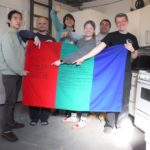
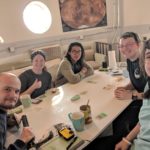
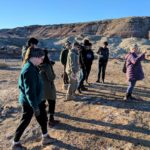
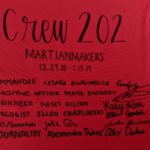
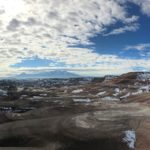
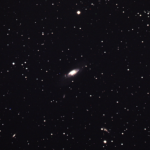
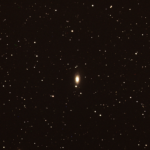

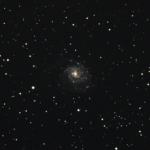
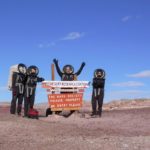
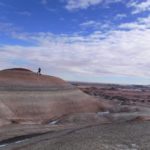
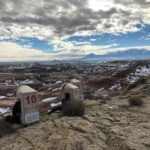
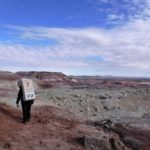

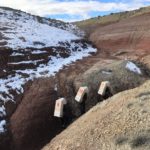
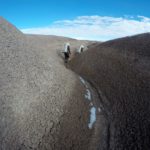
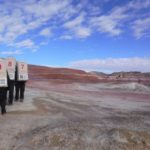
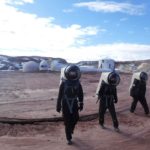
You must be logged in to post a comment.